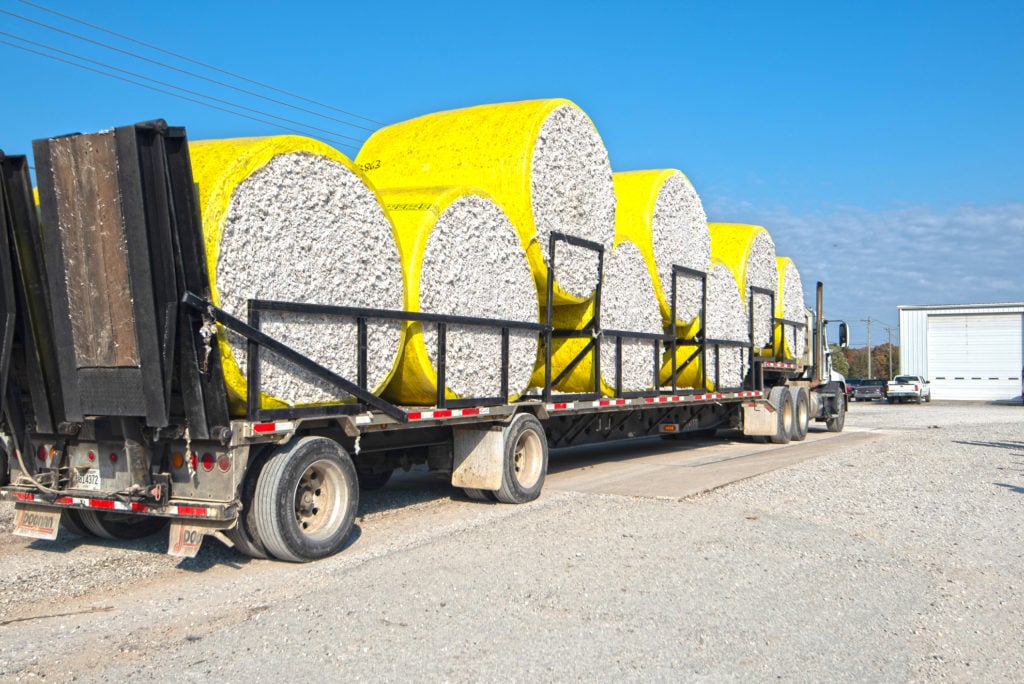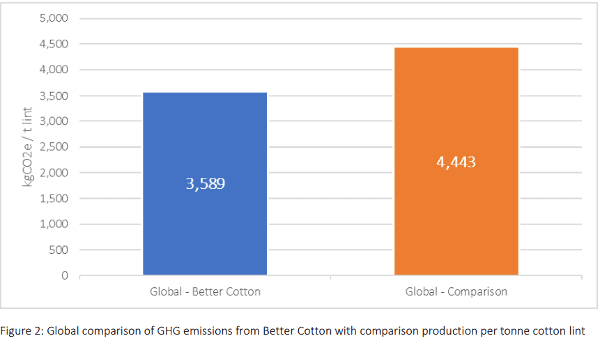Photo Credit: Better Cotton/Demarcus Bowser Location: Burlison, Tennessee, USA. 2019. Cotton bales being transported from Brad Williams’ farm.
3 min read
Reducing the amount of greenhouse gases (GHG) in our atmosphere is essential to limit the impacts of climate change. As agriculture is estimated to be responsible for up to 8.5% of all greenhouse gas emissions, with a further 14.5% coming from land use change, cotton has a key role to play in the transition to a greener future. At Better Cotton, we aim to help farmers substantially reduce their greenhouse gas emissions while increasing their crop quality and yields through good soil health and farming practices that capture carbon into soil.
Quantifying GHG emissions in cotton
A report published in October 2021 revealed the first-ever quantification of global greenhouse gas emissions of Better Cotton and comparable cotton production. The report, conducted by Anthesis Group and commissioned by Better Cotton, found significantly lower emissions from Better Cotton licensed farmers’ cotton production – on average 19% lower emissions intensity per tonne of lint versus comparable production across China, India, Pakistan, Tajikistan, and Turkey. Over half of the difference in emissions performance between Better Cotton and comparison production is due to difference in emissions from fertiliser production, while a further 28% of the difference is caused by emissions from irrigation.
The value of understanding emissions
To help farmers to tackle the effects of climate change and adapt to protect their communities and natural habitats, climate change mitigation and adaption are central to the Better Cotton Principles and Criteria (seven principles that Better Cotton Farmers adhere to so that they can grow cotton in a way that is measurably better).
The findings from the GHG study will help Better Cotton to further understand the main drivers of emissions in each region where we operate, informing our next steps towards delivering an ambitious climate change approach as a part of our 2030 Strategy.
Collaboration and engaging new audiences
Addressing climate change and implementing mitigation and adaptation practices requires collaboration. We cannot tackle this global challenge alone. That’s why as well as working with our existing network of members and partners, we are also working to engage new audiences who are investing in climate change emergency solutions, such as global and national policy makers and funders.
We are looking at both field-level and market solutions, such as Payment for Ecosystem Services schemes and carbon markets, as well as opportunities to empower farming communities to form associations, working groups or organisations and to access and benefit from governance systems and incentives.
Promoting more sustainable farming practices across our 25 programme countries and with millions of cotton farmers has helped us to lay a foundation for mitigating climate change and supporting adaption at the farm-level. Now, as we launch our ambitious 2030 GHG emissions target – to reduce overall greenhouse gas emissions per tonne of Better Cotton produced by 50% by 2030 – we are looking to collaborate with actors across the cotton supply chain and develop our systems and services to deepen our impact.
Learn more about GHG emissions in cotton production.
Do you want to know more about the work of Better Cotton? Get in touch!



















